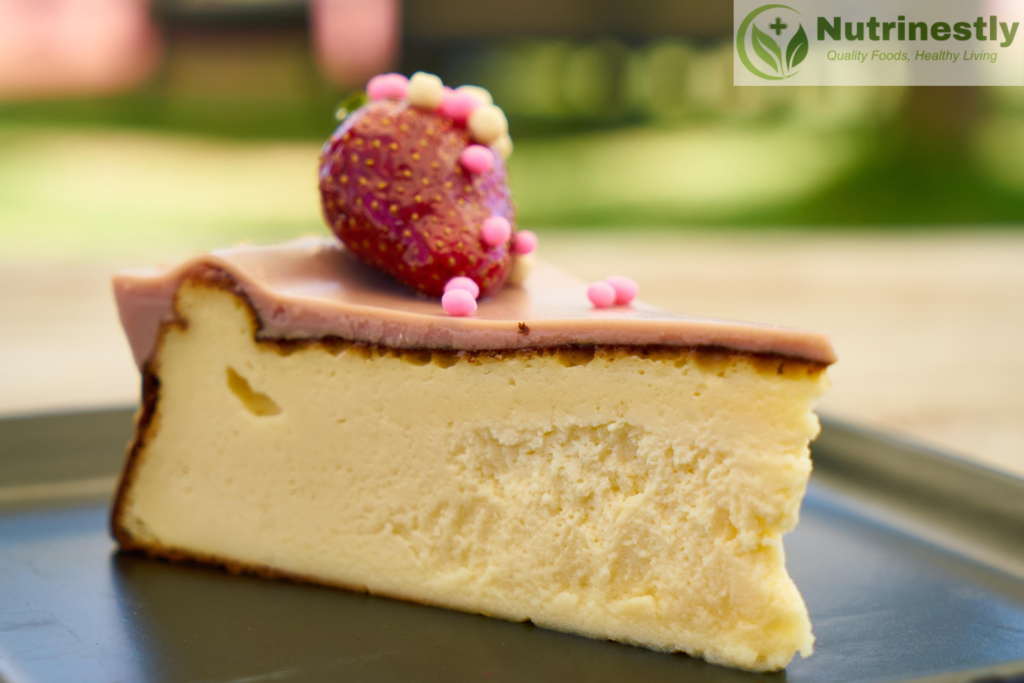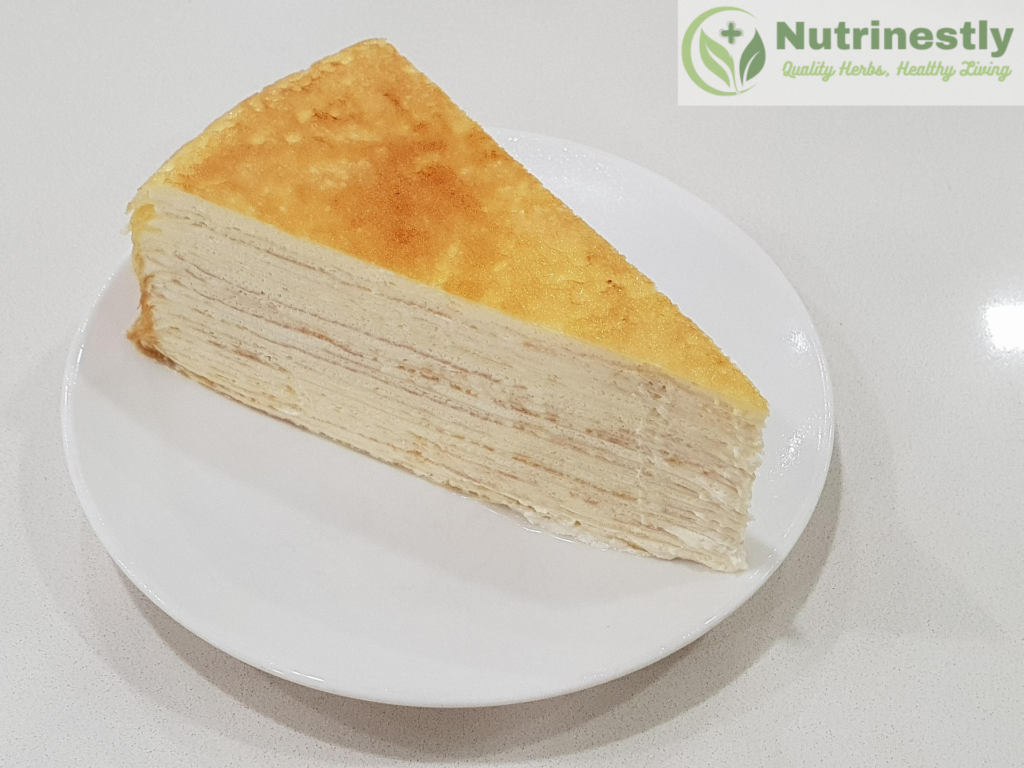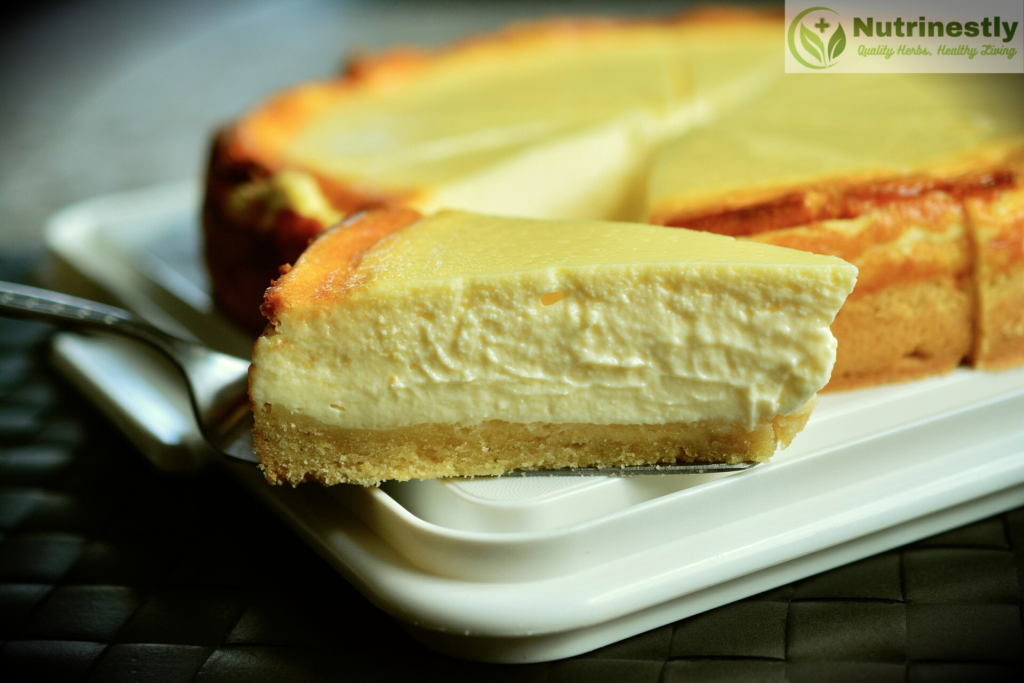
Cheesecake is a favorite dessert with a rich, creamy texture and indulgent flavor. Yet it is also high in fat, sugar, and calories, which means that it is a dessert that needs to be savored in moderation. Knowing the nutrition facts of cheesecake can be useful for those on a diet or simply wishing to make better choices. This guide gives an in-depth analysis of cheesecake’s nutritional content and tips on how to consume it intelligently.
1. Calories Count
A typical slice of cheesecake can contain anywhere from 300 to 450 calories, with practically all variations dependent on the particular ingredients and toppings used. Dense New York-style cheesecake? Higher in calories. No-bake or Greek yogurt-based version? Lighter all around
How To Enjoy Without Getting Too Caloric:
- Choose mini cheesecakes, or share a slice with a friend.
- Leave off the crust to cut down on some extra carbs and fats.
- Make it at home so you can control portion size and ingredients.
2. Fat Watch
Naturally, cheesecake is rich in fats, good amounts of which will be saturated fats coming from the cream cheese, butter, and heavy cream. On average, a slice contains about 20-30 grams of fat, 10-15 of which can be saturated fat.
Suggestions to Achieve a Lighter Take on Cheesecake:
- Substitute Greek yogurt or reduced-fat versions for full-fat cream cheese.
- Use mashed bananas or applesauce to reduce the amount of butter in the crust.
- Consider using cashew cream or tofu to create a plant-based alternative.
3. Check Sugar Level
A classic cheesecake can cut the sugar in bulk, an average of 15g-25g of sugar per slice, thus causing blood sugar spikes.
Ways to Cut White Sugar While Still Retaining Sweetness:
- Switch white sugar with honey, maple syrup, or monk fruit sweetener.
- Choose fresh fruit toppings over sugary syrups or caramel.
- Go with dark chocolate drizzle instead of milk chocolate to keep sugar levels down.
4. Think Protein Value
Surprisingly, cheesecake has around 5-8 grams of protein in it per slice due to the dairy content and makes the dessert much more filling than others.
Ways to Boost Protein Content:
- Use Greek yogurt or cottage cheese instead of plain cream cheese.
- Add a scoop of protein powder to the batter.
- For more protein and healthy fat, consider using a nut-based crust
5. Calcium Check
It is a fair source of calcium, with one slice accounting for 8 to 10% of your daily value (DV).
Ways to Bump Up Calcium Intake:
- Smooth out cheesecake with a glass of milk or almond milk.
- For added calcium power, use Greek yogurt for a base.
- Top with chia seeds or almonds for even more bone-building minerals.

6. Understanding Carbohydrate Function
A slice of cheesecake contains 25 to 35 grams of carbs, mostly contributed by sugar and the crust. If you are strictly watching your carbs, that’s something to worry about.
Ways to Cut Carbs in Cheesecake:
- Replace graham cracker crusts with almond flour or coconut flour.
- Replace sugar with erythritol or stevia
- Try baking a keto cheesecake without sugars on it.
7. Look at the healthier alternatives to crust
You could change the crust since it adds sugar and empty calories.
The healthy options for crust include:
- Almond flour or walnut crusts-for healthy fats and protein.
- Oat-based crusts for extra fiber.
- Coconut flakes-for a gluten-free, little sweet twist.
8. Avoid all the Artificial Additives
Most store-bought cheesecakes are laced with stuff that holds preservatives, artificial flavors, and stabilizers that do no good to your body.
The reason that it is always better to have one’s own home version:
- You know what’s going on: everything is going to be fresh and natural.
- No hidden additives-just wholesome dairy, eggs, and natural flavors.
- Make it to your tastes, sweetening, flavoring, and topping to your desired degree.
9. Lighten Toppings

Decide well with the toppings because they can add nutritious content or unnecessary calories.
Healthier Topping Ideas:
- Fresh berries such as strawberries, blueberries, and raspberries for antioxidants.
- Sliced apples or pears with a sprinkle of cinnamon.
- Dark chocolate shavings for a hint of indulgence with less sugar.
10. Treat Yourself but Do Not Overdo It
Truth be told, cheesecake is meant for enjoyment. The trick is moderation.
How to Church Your Eater:
- Take bites and let the flavor sit.
- Choose small bites, like mini cheesecakes.
- Enjoy dessert with a nourishing meal in your day.
Final Thoughts:
Cheesecake Can Indulge and Be Prudent .
Cheesecakes need not be fully indulgent or totally off the table. A little wise swapping and mindful eating can keep this classic treat free from guilt. Of course, making it a healthier version at home or controlling the portions would do the trick.
What’s your best way of enjoying cheesecake? Have a secret healthy recipe? Share your comments below or tag us on social media

